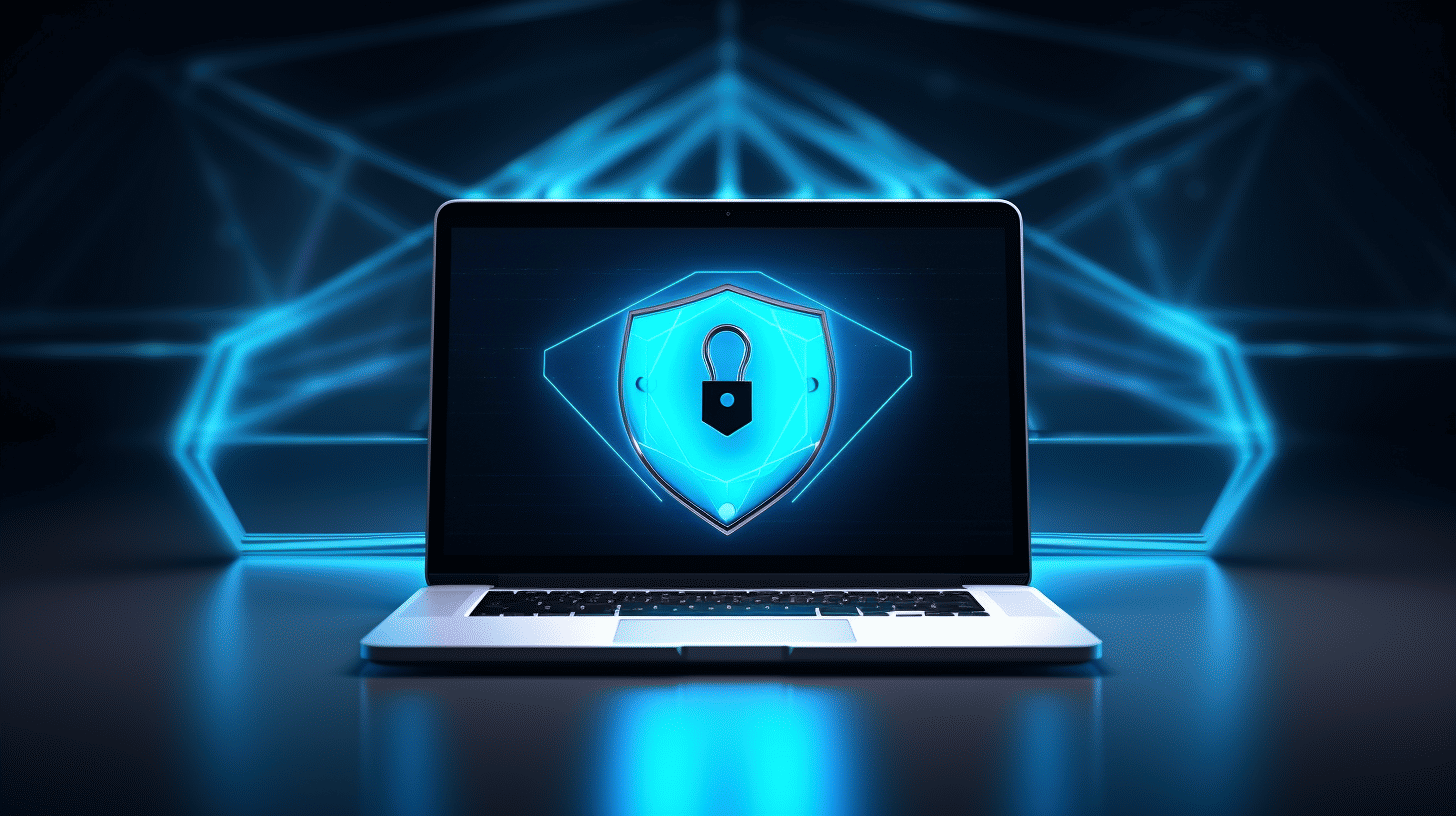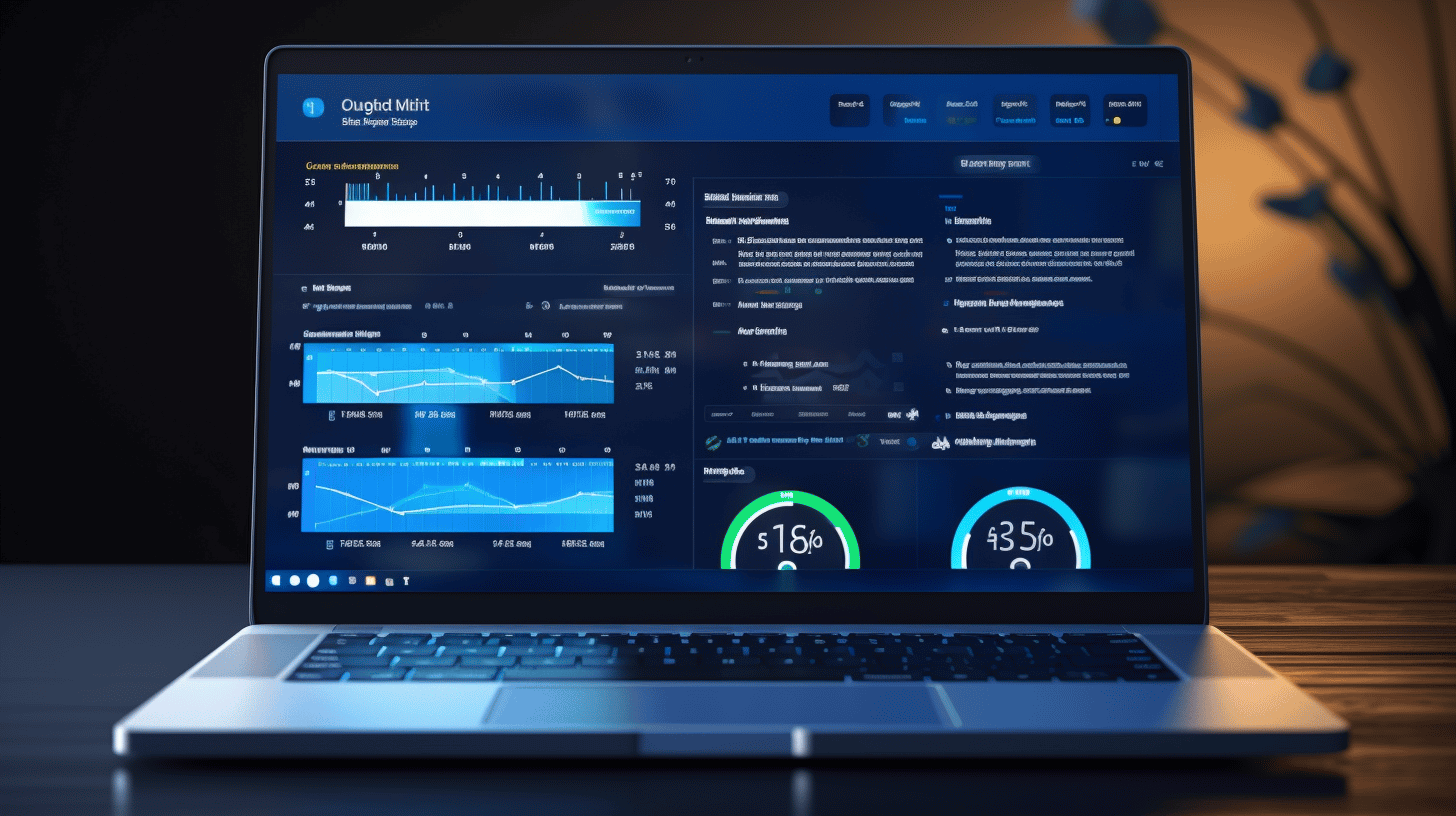在網路威脅日益普遍的世界中,保護您的網站至關重要。隨著 WordPress 作為內容管理系統的流行,確保 WordPress 網站的安全對於保障您的線上形象至關重要。在本文中,我們將深入探討 WordPress 安全實踐領域,並為您提供增強網站防禦能力的基本知識。從了解常見威脅到實施強大的安全措施,我們將涵蓋您需要了解的所有內容,以確保您的 WordPress 網站安全可靠。
🔒💻💪
透過遵循本文概述的最佳安全實踐,您可以保護寶貴的數據,維護網站的完整性,並為訪客提供安全的瀏覽體驗。那麼,讓我們一起深入探索 WordPress 安全的世界吧!
了解 WordPress 漏洞
🔒簡介:
WordPress 是當今網路上最受歡迎的內容管理系統 (CMS) 之一,為全球數百萬個網站提供支援。然而,它的受歡迎程度也使它成為駭客和網路犯罪分子的主要目標。在本節中,我們將探討 WordPress 網站面臨的常見威脅,並檢查近年來發生的一些值得注意的安全漏洞。
WordPress 網站的常見威脅:
WordPress 漏洞可以透過多種方式利用,從簡單的暴力攻擊到更複雜的技術。以下是 WordPress 網站所有者應該注意的一些常見威脅:
- 過時的主題和插件:使用過時的主題和外掛程式可能會使您的網站容易受到攻擊。開發人員會定期發布更新來修補安全漏洞,因此保持 WordPress 安裝、主題和外掛程式為最新版本至關重要。
- 弱密碼:許多針對 WordPress 網站的攻擊都是由於密碼薄弱造成的。使用強大而獨特的密碼可以顯著提高您網站的安全性。考慮使用密碼管理器來產生和儲存複雜的密碼。
- 文件包含漏洞:檔案包含漏洞可以允許攻擊者利用主題或外掛程式中的漏洞在您的網站執行惡意程式碼。定期更新您的主題和外掛程式以防止此類攻擊。
- 暴力攻擊:暴力攻擊涉及系統地嘗試大量使用者名稱和密碼組合,直到找到正確的組合。實施強登入憑證並限制登入嘗試次數可以幫助防止暴力攻擊。
- 跨站腳本 (XSS):XSS 攻擊涉及向網站注入惡意程式碼,然後由毫無戒心的使用者執行。為了防止 XSS 攻擊,請確保您的主題和外掛是安全的、清理使用者輸入並使用輸出轉義技術。
- SQL注入:SQL 注入攻擊針對的是未正確清理使用者輸入的易受攻擊的 WordPress 外掛程式或主題。保持外掛和主題更新並使用安全性外掛程式可以幫助減輕 SQL 注入攻擊的風險。
- 網路釣魚嘗試:網路釣魚嘗試涉及誘騙用戶洩露敏感信息,例如用戶名、密碼或信用卡詳細信息。教育自己和您的網站使用者如何識別和避免成為網路釣魚詐騙的受害者。
近年來值得注意的 WordPress 安全漏洞:
雖然 WordPress 正在不斷改進其安全措施,但還是發生了幾起值得注意的安全漏洞,凸顯了保持警惕和主動性的重要性:
- 巴拿馬文件洩露:2016 年,巴拿馬文件外洩事件揭露了莫薩克·馮賽卡(一家巴拿馬律師事務所)的機密文件,最初被認為是該律師事務所 WordPress 網站上使用的 Revolution Slider 外掛程式版本過舊所致。
- SoakSoak 惡意軟體:2014 年,SoakSoak 惡意軟體利用流行的第三方外掛程式 Slider Revolution 中的漏洞感染了超過 100,000 個 WordPress 網站。
- 針對 WordPress.com 的 DDoS 攻擊:2013 年,WordPress.com 遭受大規模分散式阻斷服務 (DDoS) 攻擊,導致數百萬用戶暫時無法存取該網站。
💡 值得注意的是,這些安全漏洞並不一定表示 WordPress 本身有固有缺陷。相反,它們提醒網站所有者必須勤勉維護和保護他們的 WordPress 安裝、主題和外掛。
透過了解 WordPress 網站面臨的常見威脅並從過去的安全漏洞中吸取教訓,您可以採取主動措施保護您的網站並確保線上安全。隨時了解最新的安全最佳實踐並實施強大的安全措施,以保護您的 WordPress 網站免受潛在的漏洞和攻擊。
奠定堅實基礎:WordPress 核心安全
在廣闊且不斷變化的網站安全世界中,確保您的 WordPress 網站的安全至關重要。採取措施保護您的 WordPress 安裝核心不僅可以讓您高枕無憂,而且還有助於保護您的資料、聲譽和訪客的體驗。在本文中,我們將探討一些可以採取的基本措施,為您的 WordPress 核心安全性奠定堅實的基礎。
定期更新和補丁
🔧 保持 WordPress 安裝更新對於維護網站安全至關重要,因為更新通常包含重要的安全性修復和改進。以下是定期更新時需要記住的幾個關鍵點:
- WordPress 核心更新:保持警覺並關注 WordPress 團隊發布的任何新更新。確保及時更新您的核心 WordPress 安裝,以從最新的安全性增強功能和錯誤修復中受益。
- 外掛和主題更新:除了核心更新之外,關注外掛和主題更新也同樣重要。透過定期更新這些組件,您可以確保修補所有漏洞,從而降低被利用的風險。
文件和數據權限
🗃️正確設定檔和資料權限是 WordPress 核心安全的重要面向。透過設定適當的權限,您可以控制對伺服器上敏感檔案的存取。以下是一些值得考慮的最佳做法:
- 文件權限:根據最小特權原則配置您的檔案權限。這意味著提供每個檔案或目錄所需的最低存取等級。一般來說,目錄應該具有755的權限,檔案應該具有644的權限。
- 資料庫安全:確保指派給您的 WordPress 安裝的資料庫使用者俱有正常操作所需的最少權限,從而保護您的資料庫。避免使用資料庫的預設「admin」使用者名,並選擇強密碼以防止未經授權的存取。
使用安全連接
🔒 確保您的網站訪客和您的 WordPress 網站之間的連接至關重要。對雙方之間傳輸的資料進行加密有助於保護敏感資訊免遭攔截和篡改。以下是需要實施的兩項關鍵安全措施:
- SSL/TLS 憑證:為您的 WordPress 網站取得並安裝 SSL/TLS 證書,以便透過 HTTPS 實現安全連線。這不僅為您的訪客提供了更安全的瀏覽體驗,而且還提高了您網站的可信度。
- 安全登入:採取措施保護您的 WordPress 管理面板的登入流程。其中包括啟用雙重認證、實施強密碼策略以及限制登入嘗試以防止暴力攻擊。
透過定期更新您的 WordPress 安裝、設定適當的文件和資料權限以及使用安全連接,您可以為 WordPress 核心安全建立堅實的基礎。請記住,保護您的網站是一個持續的過程,因此了解最新的安全實踐並做出相應調整至關重要。
掌控:管理員安全實踐
在當今的數位環境中,保護敏感資料和維護網路安全至關重要。管理員在確保系統和資訊的安全性和完整性方面發揮著至關重要的作用。透過實施強大的安全實踐,這些管理員可以加強對潛在威脅的防禦。本文將探討可協助管理者控制安全性的三種關鍵實務:更強的密碼原則、雙重認證以及限制使用者存取和權限。
更強的密碼策略
密碼通常是抵禦未經授權存取的第一道防線。不幸的是,弱密碼仍然是許多組織的重大弱點。為了解決這個問題,管理者應該實施更嚴格的密碼策略。以下是一些需要考慮的基本準則:
- 混合使用大小寫字母、數字和特殊字元。
- 設定最小密碼長度要求。
- 定期強制密碼過期並要求使用者建立新密碼。
- 教育使用者創造獨特、複雜的密碼的重要性,並且不要使用容易猜到的選項,如生日或常用字。
透過實施這些措施,管理員可以顯著降低暴力攻擊和未經授權存取成功的可能性。
雙重身份驗證
雙重認證 (2FA) 是一種強大的安全措施,可為使用者帳戶增加額外的保護層。使用 2FA,使用者需要提供兩種不同形式的身份驗證才能存取他們的帳戶,例如密碼和發送到他們的行動裝置的唯一代碼。即使攻擊者設法取得使用者密碼,這項額外步驟也使他們更難獲得未經授權的存取。
實施 2FA 可以幫助管理者降低與密碼被竊或外洩相關的風險。透過要求使用額外的驗證方法(例如行動應用程式或硬體令牌),管理員可以顯著增強其係統的安全性。
限制使用者存取和權限
僅授予使用者所需的存取權限和權限是維護網路安全的關鍵做法。管理員應仔細評估每個使用者的角色和職責,並相應地授予適當級別的存取權限。以下是限制使用者存取和權限的一些關鍵策略:
- 實施最小特權原則 (PoLP),確保使用者擁有有效執行任務所需的最小存取權限。
- 定期審查和更新使用者權限以反映職責或工作角色的變更。
- 監控和審核使用者活動以識別任何未經授權或可疑的活動。
透過實施這些措施,管理員可以最大限度地減少內部威脅和未經授權的存取的潛在影響。
🔒請記住,您的網路的安全性完全取決於您實施的實踐。透過實施更強大的密碼策略、實施雙重認證以及限制使用者存取和權限,管理員可以控制其網路的安全性。保護敏感資料是一場持久戰,但只要採取正確的措施,您就可以大幅降低未經授權的存取或資料外洩的風險。保持警惕,每一步都把安全放在首位。
使用 WordPress 外掛程式增強安全性
在不斷發展的網路安全世界中,採取主動措施保護您的 WordPress 網站至關重要。增強網站安全性的一個有效方法是利用專門設計用於解決安全漏洞的 WordPress 外掛程式。由於可用的插件種類繁多,因此了解如何評估和選擇適合您網站需求的插件非常重要。在本文中,我們將探討評估插件安全性的重要性,重點介紹一些最安全的 WordPress 安全插件,並強調定期插件管理和更新的重要性。
理解並評估插件安全性
在選擇 WordPress 外掛時,安全性應該是首要的標準。以下是評估外掛程式安全性時需要考慮的一些基本提示:
- 檢查插件相容性和評級:在安裝任何外掛程式之前,請先檢查它與您的 WordPress 版本的兼容性,並考慮其整體評分和其他用戶的評價。
- 調查開發商:研究插件開發者的聲譽和業績記錄。尋找有積極維護和更新插件歷史的開發人員,因為這表明了對安全性和效能的承諾。
- 審查漏洞揭露:隨時了解與特定插件相關的任何已知漏洞。檢查開發人員已承認並及時解決的任何報告的安全問題或漏洞。
- 考慮主動支援和更新:尋找那些能定期更新並得到開發者社群積極支持的插件。頻繁更新是一個很好的指標,表明該插件正在積極維護以應對新出現的安全威脅。
- 檢查用戶回饋:花時間閱讀使用者回饋,特別注意任何提到的安全疑慮或問題。尋找在安全性能方面持續獲得正面回饋的插件。
最安全的 WordPress 安全性插件
雖然有許多可用的安全插件,但重要的是選擇那些已被證明能夠有效保護 WordPress 網站的知名插件。一些可用的頂級安全插件包括:
這些插件提供了一系列安全功能,例如防火牆保護、惡意軟體掃描、登入安全性和檔案完整性監控。它們不斷更新以應對新出現的威脅,使其成為加強您網站安全的可靠選擇。
定期管理和更新插件
為了持續維護網站的安全,定期管理和更新外掛程式至關重要。以下是一些需要牢記的最佳做法:
- 保持插件更新:請務必確保您正在執行的是已安裝插件的最新版本。開發人員經常發布更新來解決安全漏洞並提高效能。
- 刪除未使用的插件:如果您有任何不再需要或不再使用的插件,請考慮將其全部刪除。如果不加以注意,未使用的插件可能會成為潛在的安全風險。
- 備份您的網站:定期備份您的 WordPress 網站,以便在外掛程式更新或安裝期間出現任何安全漏洞或意外問題時有一個還原點。
- 隨時了解狀況:隨時了解 WordPress 社群的最新安全趨勢和新聞。訂閱安全部落格、論壇或新聞通訊,以了解任何潛在的漏洞或推薦的安全措施。
透過遵循這些最佳實踐,您可以降低風險並為您的 WordPress 網站維持強大的安全態勢。
請記住,保護您的 WordPress 網站需要採取主動的方法。透過了解和評估外掛程式安全性、選擇信譽良好的安全性外掛程式並定期管理和更新它們,您可以增強網站的安全性並保護其免受潛在威脅。
確保伺服器環境安全
在當今的數位環境中,確保伺服器環境的安全至關重要。隨著網路威脅日益複雜,有必要採取主動措施保護您的伺服器免受未經授權的存取、資料外洩和其他惡意活動的侵害。在本節中,我們將探討一些有效的方法來保護您的伺服器環境並確保您的資料安全。
配置 .htaccess 以增強安全性
.htaccess 檔案是 Apache 網路伺服器用來控制網站行為的設定檔。它允許您設定訪問網站的規則和限制,在保護您的伺服器環境方面發揮至關重要的作用。以下是配置 .htaccess 檔案以增強安全性的一些技巧:
- 停用目錄列表:預設情況下,Apache 允許目錄列表,這意味著任何人都可以存取您的目錄的內容。為了防止這種情況,請在您的 .htaccess 檔案中新增以下行:
選擇權-指數- 保護敏感文件:如果您的伺服器上有包含敏感資訊的文件,例如資料庫設定文件,則必須保護它們不被公眾存取。您可以在 .htaccess 檔案中使用以下程式碼片段來限制對特定檔案的存取:
命令允許,拒絕 全部拒絕
- 封鎖對某些 IP 位址的存取:如果您注意到特定 IP 位址的可疑活動,您可以阻止他們存取您的伺服器。將以下程式碼新增至您的 .htaccess 文件,將「xxx.xxx.xxx.xxx」替換為您要封鎖的 IP 位址:
命令拒絕,允許拒絕來自 xxx.xxx.xxx.xxx
安全通訊端層 (SSL) 實施
在您的伺服器上實施 SSL(安全通訊端層)對於確保您的網站與其使用者之間的通訊安全至關重要。 SSL 對透過網路傳輸的資料進行加密,使得攻擊者幾乎不可能攔截和解密。這就是為什麼 SSL 實施對於您的伺服器環境至關重要:
- 資料加密:SSL 對伺服器和使用者裝置之間交換的資料進行加密,確保登入憑證和信用卡詳細資料等敏感資訊的安全。
- 身份驗證:SSL 憑證驗證您的網站的身份,在您的伺服器和使用者的瀏覽器之間建立信任。這有助於防止網路釣魚攻擊並增強您網站訪客的信心。
- 搜尋引擎排名:SSL 現在被搜尋引擎視為排名因素。擁有 SSL 憑證的網站往往在搜尋結果中排名更高,從而提高了其知名度和可信度。
防火牆和入侵偵測系統的使用
防火牆和入侵偵測系統 (IDS) 是保護您的伺服器環境免受未經授權的存取和惡意活動的重要工具。這些安全措施如何有助於建立安全的伺服器環境:
- 防火牆:防火牆充當伺服器和網際網路之間的屏障,監控傳入和傳出的網路流量。它可以阻止惡意請求,防止 DDoS 攻擊,並限制對您的伺服器的未經授權的存取。
- 入侵偵測系統:IDS 監控網路流量是否有可疑活動或潛在的安全漏洞。它可以偵測異常,例如未經授權的存取嘗試或異常的網路行為,並觸發警報,讓您立即採取行動。
實施防火牆和 IDS 的強大組合可以大大增強伺服器環境的安全性,並提供針對各種網路威脅的額外保護層。
透過遵循這些最佳實踐並實施必要的安全措施,您可以創建一個安全的伺服器環境,保護您的資料並確保您的用戶獲得順暢、不間斷的線上體驗。請記住,網路安全世界不斷發展,因此請隨時了解最新的安全實踐,以便領先潛在威脅一步。
WordPress 安全和維護
介紹:
在廣大且不斷發展的網路領域中,維護 WordPress 網站的安全性至關重要。隨著網路威脅的不斷增加,實施安全措施來保護您的網站並維護其完整性至關重要。在本節中,我們將探討 WordPress 安全性和維護的三個關鍵方面,幫助您保護您的網站並保持順利運作。
定期網站備份
定期備份您的網站就像為您寶貴的資料和內容提供安全網。它確保即使發生最壞的情況,您也可以快速將網站恢復到以前的狀態。以下是定期網站備份至關重要的幾個原因:
- 防止資料遺失: 無論是因為駭客攻擊、伺服器崩潰或意外刪除,資料遺失都可能造成毀滅性的後果。定期備份可以讓您恢復遺失的資訊並讓您的網站重新啟動並運行。
- 安心: 知道您擁有網站的最新備份會讓您安心。它允許您嘗試更改、更新和新插件,而不必擔心對您的網站造成不可逆轉的損害。
- 更容易的災難復原: 如果發生安全漏洞或網站故障,擁有最近的備份可以顯著減少停機時間。它使您能夠快速恢復您的網站並最大限度地減少對您的訪客和業務的影響。
為了確保無縫網站備份,您可以考慮使用 WordPress 插件,例如 UpdraftPlus 或 BackupBuddy。這些外掛程式可自動執行備份流程,並允許您將備份安全地儲存在 Dropbox 或 Google Drive 等外部平台上。
審計和監控網站活動
定期審核和監控您的網站活動可以幫助您識別潛在的安全風險並採取主動措施解決它們。透過密切關注您的網站的日誌和活動,您可以:
- 偵測惡意活動: 監控您網站的日誌可以幫助您識別未經授權的登入嘗試、可疑的活動模式或潛在的駭客攻擊。透過及早識別這些跡象,您可以採取措施減輕風險並保護您的網站。
- 追蹤外掛和主題漏洞: 外掛程式和主題在擴展您網站的功能方面發揮著至關重要的作用,但它們也可能帶來安全漏洞。定期審核它們可確保您隨時了解最新版本和補丁,從而減少被利用的機會。
- 發現效能問題: 監控網站活動還可以幫助您識別效能瓶頸,例如載入時間緩慢或伺服器錯誤。透過及時解決這些問題,您可以增強使用者體驗並最大限度地降低訪客離開您網站的風險。
為了簡化追蹤過程,您可以使用 Sucuri 或 Wordfence 等安全性外掛程式。這些工具提供即時監控並針對可疑活動發出警報,讓您立即採取行動。
及時安裝安全性修補程式和更新
WordPress 安全的基本支柱之一是保持您的網站及其組件保持最新。這包括及時安裝 WordPress 核心、主題和外掛程式的安全性修補程式和更新。這就是為什麼它很重要:
- 修復漏洞: 開發人員正在不斷致力於提高安全性並解決任何已發現的漏洞。透過及時更新您的網站,您可以確保擁有最新的安全補丁,從而最大限度地降低被攻擊的風險。
- 相容性和效能: 更新通常包括錯誤修復和效能改進,確保順利運行並與其他 WordPress 元件相容。透過保持更新,您可以受益於增強的功能和更安全的整體系統。
- 確保插件的可靠性: 外掛是客製化您的 WordPress 網站的重要資產。然而,過時的插件可能會成為一種負擔,為駭客提供利用漏洞的機會。定期更新可確保您受益於新功能並使用最安全的版本。
為了隨時了解更新和補丁,請盡可能啟用 WordPress 核心、主題和外掛的自動更新。利用自動化功能可以消除手動更新每個組件的負擔,使維護變得輕鬆。
請記住,透過定期進行網站備份、審核和監控網站活動以及隨時了解安全修補程式和更新,您可以顯著增強 WordPress 網站的安全性和效能。立即採取主動措施保護您的數位存在免受潛在威脅並確保流暢的用戶體驗。
結論
總而言之,確保您的 WordPress 網站的安全性對於保護其免受潛在威脅和侵害至關重要。透過實施本文概述的基本安全實踐,您可以顯著增強網站的防禦能力並最大限度地降低未經授權的存取或資料外洩的風險。
請記住,這不僅僅是為了加強您網站的外圍安全;維護安全需要警惕的監控和定期更新。透過保持主動性並採用最佳實踐,您可以保護您的網站並為您的訪客提供安全的瀏覽體驗。
在 Managed-WP,我們了解網站安全的重要性,這就是我們提供全面管理的 WordPress 雲端託管平台的原因。我們的專家團隊確保基礎設施的穩健,提供全天候的解決問題支持,並讓您可以自由地專注於提供卓越的數位體驗。選擇 Managed-WP 作為您值得信賴的合作夥伴,簡化您網站的安全。
使用 Managed-WP 控制您網站的安全。 立即註冊 體驗安全可靠的託管解決方案帶來的安心。 🚀
常見問題解答
- 哪些是基本的 WordPress 安全實務?
基本的 WordPress 安全實踐包括:1. 保持 WordPress、主題和插件更新,2. 使用強大而獨特的密碼,3. 安裝 WordPress 安全插件,4. 啟用雙重認證,5. 定期備份您的網站。
- 為什麼保持 WordPress 和外掛更新很重要?
為了安全起見,保持 WordPress 和外掛程式更新至關重要。更新通常包含錯誤修復、修補程式和安全性增強功能,以保護您的網站免受漏洞和潛在攻擊。
- 使用 WordPress 安全性外掛有什麼好處?
WordPress 安全性外掛程式為您的網站增加了一層額外的保護。它可以幫助偵測和阻止惡意活動、保護登入過程、監控文件變更並提供安全通知和報告。
- 雙重認證如何提高 WordPress 的安全性?
雙重認證在登入過程中增加了一個額外的步驟,需要使用者知道某些東西(密碼)和使用者擁有某些東西(例如,發送到他們手機的代碼)。它大大增加了未經授權的使用者存取您的 WordPress 儀表板的難度。
- 為什麼定期網站備份對 WordPress 安全很重要?
定期的網站備份可以為出現安全漏洞、資料遺失或網站故障提供安全保障。如果出現問題,您可以輕鬆地將您的網站恢復到以前的狀態,而不會丟失寶貴的內容和資料。


















